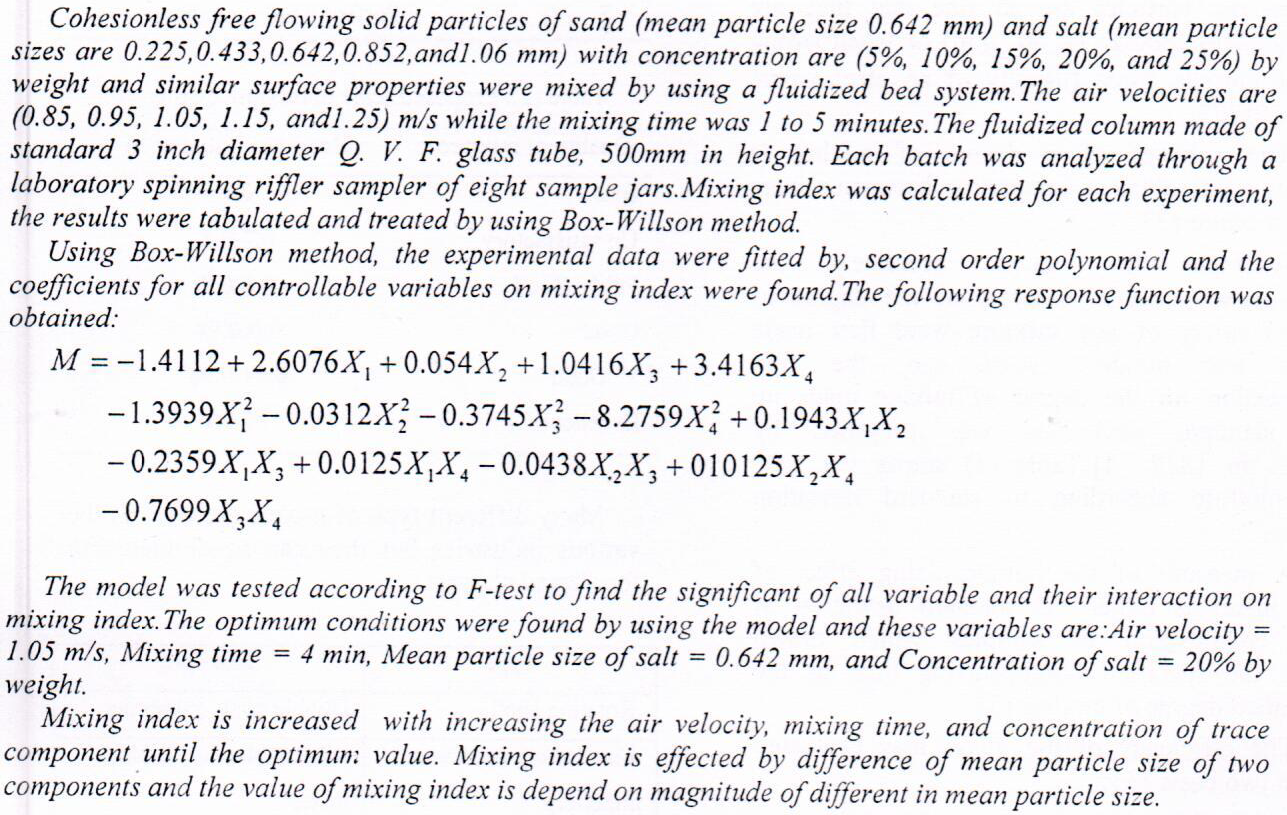
High performance work systems and general industrial enterprise performance
 (1)
(1)
The Neutron Fermi Age, t, and the neutron slowing down density, q (r, t) , have been measured for some materials such as Graphite and Iron by using gamma spectrometry system UCS-30 with NaI (Tl) detector. This technique was applied for Graphite and Iron materials by using Indium foils covered by Cadmium and the measurements done at the Indium resonance of 1.46 eV. These materials are exposed to a plane 241Am/Be neutron source with recent activity 38 mCi. The measurements of the Fermi Age were found to be t = 297 ± 21 cm2 for Graphite, t = 400 ± 28 cm2 for Iron. Neutron slowing down density was also calculated depending on the recent experimental t value and distance.
In this paper the reinforced materials manufactured from steel continues fibers are used in Aluminum matrix to build a composite material. Most of researches concentrated on reinforced materials and its position in the matrix according to its size and distribution, and their effects on the magnitude of different kinds of the stresses, so this paper presents and concentrate on the geometrical shape of reinforced material and its effects on the internal stresses and strains on the composite strength using FEM as a method for analysis after loaded by certain force showing the deference magnitudes of stresses according to the different geometrical shapes of reinforced materials.
This paper investigated the fatigue life behavior of two composite materials subjected to different times of shot peening (2, 4 and 6 min).The first material prepared from unsaturated polyester with E-glass reinforcement by 33% volume fraction. While, the second one was prepared from unsaturated polyester with aluminum powder by2.5% volume fraction. The experimental results showed that the improvement in endurance limit was obtained (for the first material) at 2, 4 and 6 min shot peening times where the percentage of maximum improvement was 25% at shot peening time of 6 min. While, the endurance limit of the second material decreased at shot peening times of 2, 4 and 6 min where the percentage of maximum reduction was 29 % at shot peenin
... Show MoreBackground: Dimensional changes of acrylic denture bases after polymerization results in need for further adjustments or even ends with technical failure of the finished dentures. The purpose of this study was to estimate the linear dimensional changes for different palatal depths when using multiple investment materials and polymerization techniques. Materials and methods: Ninety upper complete denture bases were constructed for this study. They were divided into two main groups according to the polymerization methods: conventional water bath and experimental autoclave (short and long cycles). Each main group was further subdivided into three subgroups according to the palatal depth (shallow, medium and deep). Furthermore, for each palatal
... Show More (4)
(4)
The research aims to; identify the management of conflict as perceived by secondary school managers toward the directors of directorates of education in wassat province, identify functional performance as perceived by secondary school managers toward the directors of directorates of education in wassat province. Besides, explore the relationship between Conflict management and functional performance among the directors of directorates of education in wassat province. A descriptive approach deemed more appropriate with study design. As a tool to collect the data of current research, the author used a questionnaire. Spss tools were used for data analysis
The purpose of this paper is to identify the statistical indicators of the searched variables and identify the relationship between the cognitive learning outcome and the performance of the two mastering skills by parallel spherical standing and equilibrium on the balance beam. And the identification of the percentage of the cognitive learning outcome contribution to the performance of the two mastering skills by parallel spherical standing and the equilibrium on the balance beam. The two researchers used the descriptive approach in the survey method and the correlational relations, being the most appropriate to the nature of the research problem. The research community for the second stage students in the College of Physical Education and
... Show MoreThe importance of this research is due to its importance goals, Which are about the attempt of researchers to investigate the probability of depending on businesses, environments to transform organizations, performance in away that enhance the leading role of organizations in their environments , and through views of a number of the staff working in the foundation of technical institutes in Mosul. .
After deciding the methodology of the study that ,in one hand ,performs the goals of the study , and achieving a suitable theoretical framework to present the concepts of businesses, environments and the leadin
... Show More (2)
(2)
Three series of monomers, polymers and thioester cyclic compounds containing 4H-1,2,4-triazol-3-thiol moiety were synthesized and examined for their liquid crystalline properties. All monomers, polymers and thioester compounds were characterized by elemental analysis and FTIR, 1 H-NMR and mass spectroscopy. The phase transition and mesomorphic properties were investigated by polarized optical microscope (POM) and differential scanning calorimetry (DSC). The monomer with terminal phenyl substituent display dimorphism nematic and smectic A (SmA) mesophases. The corresponding polymers derived from acrylic and phenyl acrylic acid monomers show nematic mesophase. The only thioester cyclic compound derived from terephtaloyl chloride show nemati
... Show More (14)
(14)
